- Levent, Yeni Sülün Sk. No:13, 34330 Beşiktaş/İstanbul
- +90533 500 92 73
Hair Transplant for Women
Hair loss can be a frustrating and emotionally challenging experience for women. While there are various hair loss treatments available, hair transplantation offers a permanent solution for many women seeking to restore their natural hair growth.
Understanding Hair Transplant for Women
Hair transplantation involves relocating healthy hair follicles from a donor area on the scalp, typically the back or sides, to balding or thinning areas on the scalp. This allows for natural-looking hair regrowth in the recipient areas.
Here’s what makes hair transplants for women unique:
- Pattern of Hair Loss: Women often experience diffuse thinning rather than the receding hairline common in men. This requires a different approach during the transplant process.
- Hair Density: Women generally have less dense hair compared to men. This requires careful planning to achieve a natural-looking result that complements a woman’s existing hair density.
- Donor Area Selection: Surgeons prioritize minimizing scarring and ensuring a natural appearance in the donor area, which is often more noticeable in women with shorter hairstyles.
Techniques for Hair Restoration in Women
There are two main hair transplant techniques used for women, each with its own advantages:
- Follicular Unit Extraction (FUE): This minimally invasive technique involves extracting individual follicular units from the donor area. These follicular units, containing 1-4 hairs, are then transplanted to the recipient areas. FUE is preferred for women due to minimal scarring and a natural-looking hairline.
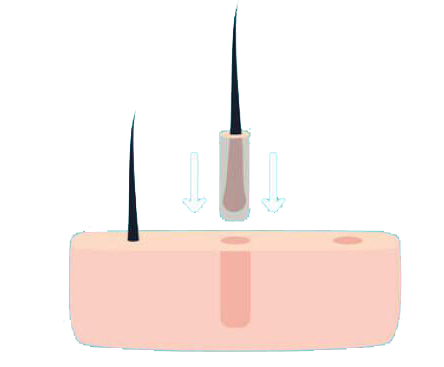
Consultation and Planning
The first step involves a consultation with a hair transplant surgeon to assess the patient's scalp, discuss their expectations, and plan the procedure. This includes determining the hairline design, the number of grafts needed, and the donor areas.
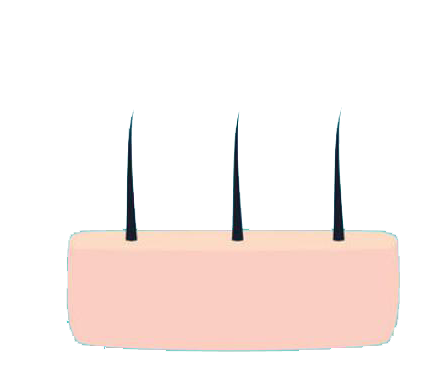
Harvesting Donor Hair
The second step is harvesting donor hair, typically from the back of the scalp, where hair is more resistant to balding. This can be done using the FUE (Follicular Unit Extraction) method, where individual hair follicles are removed one at a time, or the FUT (Follicular Unit Transplantation) method, where a strip of skin is removed and then dissected into individual grafts.
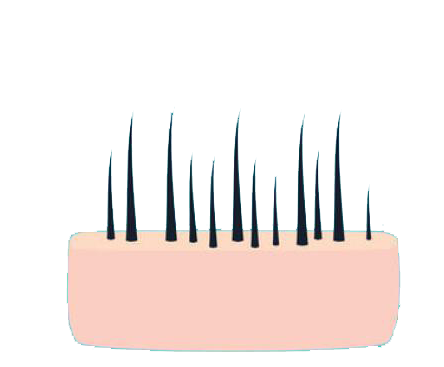
Preparation and Implantation of Grafts
Once the donor hair is harvested, the grafts are prepared under a microscope to ensure they are intact and of good quality. Then, tiny incisions are made in the recipient area, and the hair grafts are carefully implanted, paying attention to the angle and direction of the natural hair growth.
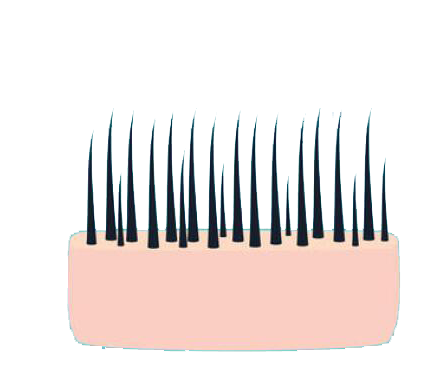
Recovery and Growth
The final step involves the patient going through a recovery phase, where they may experience some swelling, redness, and scabbing. New hair growth can usually be seen within three to four months, with more significant results visible after six to twelve months. Regular follow-ups with the surgeon are essential to monitor progress.
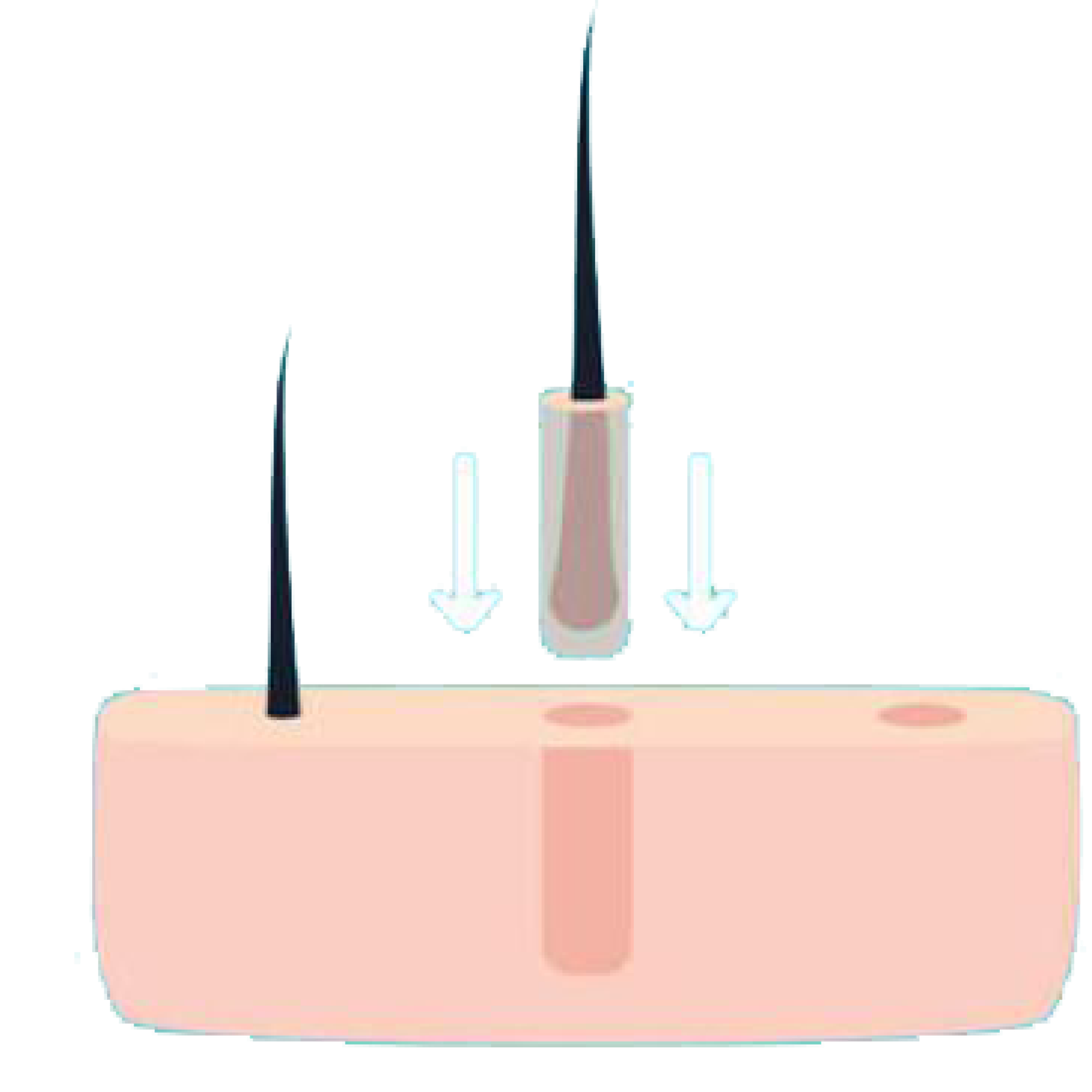
Consultation and Planning
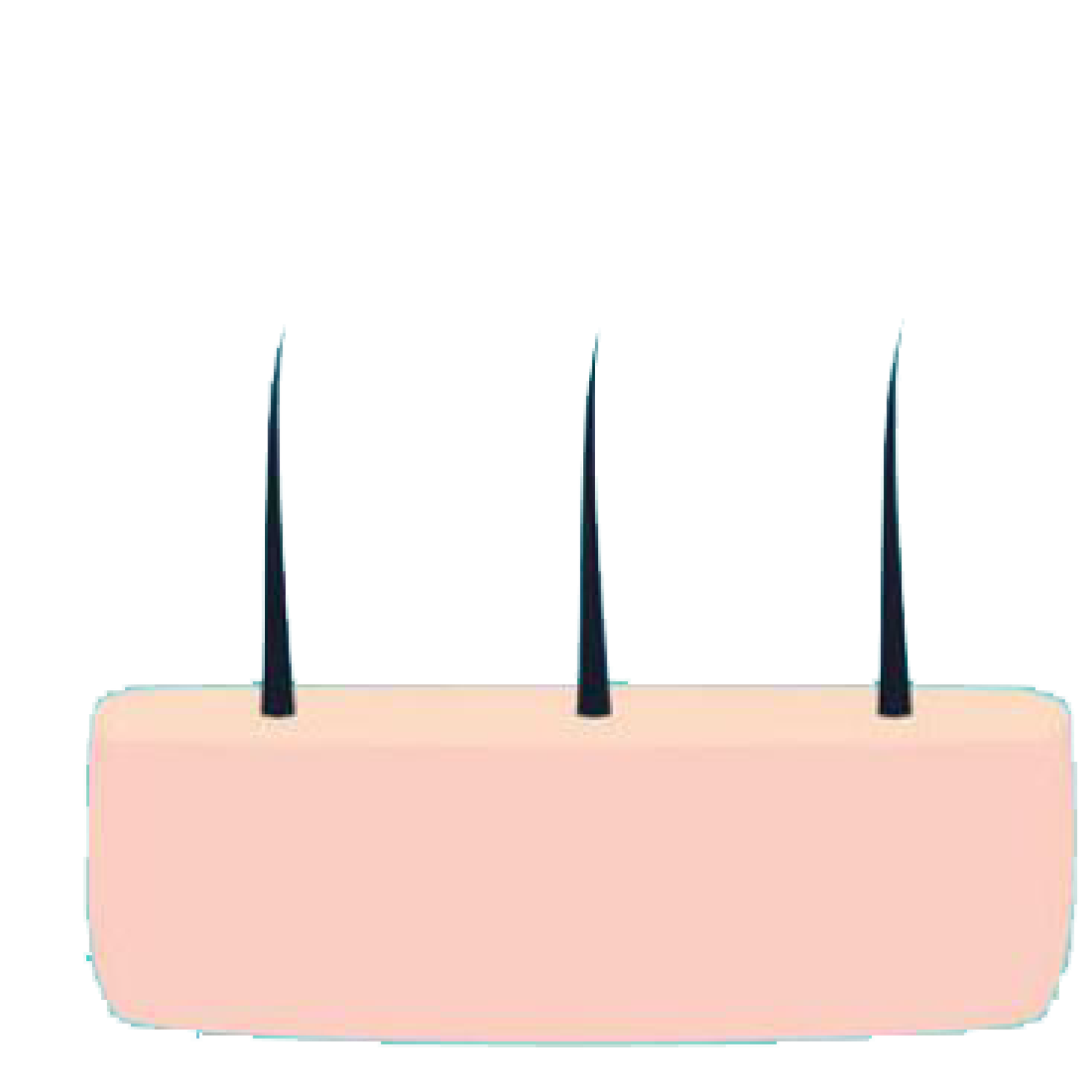
Harvesting Donor Hair

Preparation and Implantation of Grafts
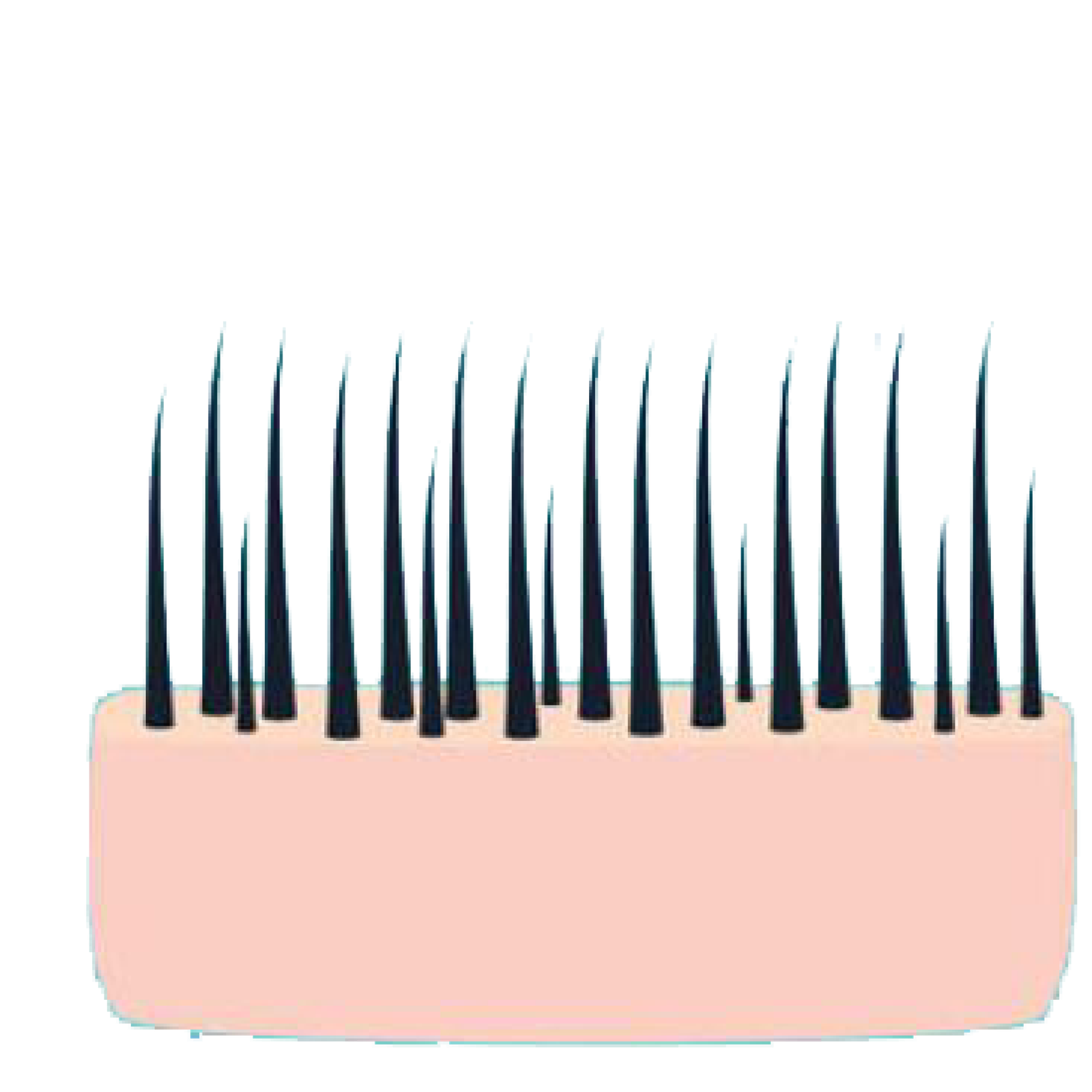
Recovery and Growth
Follicular Unit Extraction Explained:
FUE has become a preferred choice for many due to its less invasive approach. During an FUE hair transplant, the surgeon extracts single hair follicles from the donor region utilizing a precise punch instrument.
This method produces minimal scarring that is hardly noticeable and facilitates a faster healing period in contrast to the FUT technique, which involves removing a skin strip and extracting the follicles from that strip.
Precision-Driven DHI Hair Restoration
Direct Hair Implantation (DHI) represents a refined evolution of the Follicular Unit Extraction (FUE) technique. In DHI, hair follicles are harvested from a donor site and immediately implanted into the target area using a specialized device. This innovative approach bypasses the traditional step of pre-making incisions in the recipient area.
By streamlining the transplantation process, DHI offers enhanced precision and control, significantly improving the graft survival rate. This meticulous technique facilitates a more natural appearance and denser hair growth, establishing DHI as a superior option for those seeking effective hair restoration solutions.
Who is a Good Candidate for a Hair Transplant?
Hair transplants can be a great option for women experiencing various types of hair loss, including:
- Androgenetic alopecia (female pattern hair loss)
- Traction alopecia caused by tight hairstyles
- Alopecia areata (patchy hair loss)
- Scarring alopecia
- Type and cause of hair loss: A proper diagnosis is crucial to determine if a hair transplant is the right approach.
- Donor area density: You need to have enough healthy hair follicles for extraction.
- Scalp laxity: Adequate scalp elasticity is needed to accommodate the transplanted follicles.
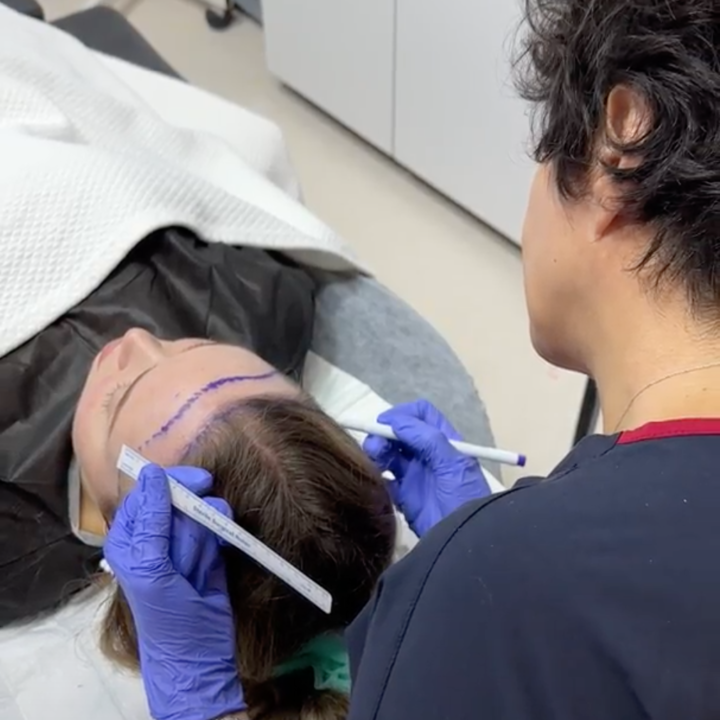

Who is a Good Candidate for a Hair Transplant?
Hair transplants can be a great option for women experiencing various types of hair loss, including:
- Androgenetic alopecia (female pattern hair loss)
- Traction alopecia caused by tight hairstyles
- Alopecia areata (patchy hair loss)
- Scarring alopecia
Here are some factors a surgeon will consider during a consultation:
- Type and cause of hair loss: A proper diagnosis is crucial to determine if a hair transplant is the right approach.
- Donor area density: You need to have enough healthy hair follicles for extraction.
- Scalp laxity: Adequate scalp elasticity is needed to accommodate the transplanted follicles.
Realistic expectations: Discussing your desired outcome and understanding the limitations of density for transplanted hair is essential.

What to Expect from a Hair Transplant Procedure
A hair transplant for women is typically an outpatient procedure performed under local anesthesia. Here’s a general outline of the process:
- Consultation: Discussing your goals, medical history, and undergoing a scalp examination.
- Procedure: Extracting hair follicles from the donor area and meticulously transplanting them to the recipient areas.
- Recovery: Expect some swelling and discomfort for a few days. Following aftercare instructions is crucial for optimal healing.
Our Goal is the Quality !
We are committed to delivering exceptional results that not only meet but exceed your expectations. Our state-of-the-art techniques, combined with a team of experienced professionals, ensure that every procedure is performed with the utmost precision and care.
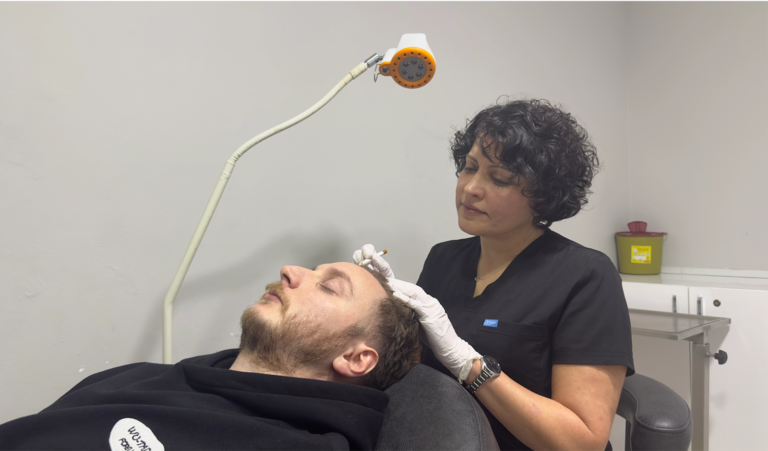
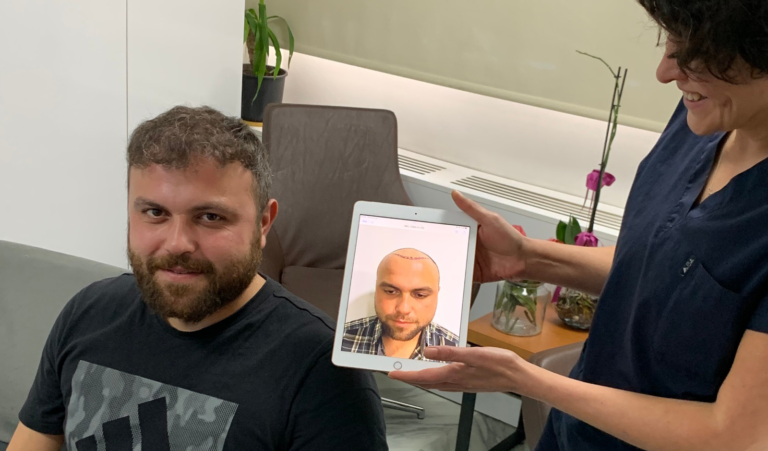
Happy patient
0
+
years of experience
0
+
Hair Growth Rate
0
%
FAQ
Hair transplants can be a great option for women experiencing hair loss due to various reasons like genetics, pattern baldness, or traction alopecia. A consultation with a qualified surgeon can determine if you have a healthy donor area and the type of hair loss you have is suitable for a transplant.
Not necessarily! Unlike traditional techniques used more often with men, hair transplant procedures for women often utilize methods like Follicular Unit Extraction (FUE) which minimize shaving. This allows for transplanting hair while keeping most of your existing hair length.
Both FUE and Follicular Unit Transplantation (FUT) can be used for women. FUE is generally preferred as it creates minimal scarring and allows for a more natural-looking hair density. However, the best technique for you will depend on your individual needs and the surgeon’s recommendation.
Most hair transplant procedures for women are outpatient surgeries with minimal discomfort. You can expect some swelling and redness for a few days, followed by scabbing that disappears within a week or two. Transplanted hair will shed initially, with new growth appearing in 3-4 months and final results taking up to 12-18 months.
Hair transplants for women offer permanent hair growth in the transplanted areas. However, it’s important to understand that they don’t prevent future hair loss entirely. Maintaining a healthy lifestyle and discussing ongoing hair loss management with your doctor is recommended.
CONTACT US
Get in Touch
We look forward to assisting you on your journey to hair restoration.
Choose the perfect product for you
- Phone : +44 20 8123 1903
- Phone : +90533 500 92 73
- Email : info@jasmedico.com
- Address : Levent, Yeni Sülün Sk. No:13, 34330 Beşiktaş/İstanbul
- Address : Halil Rıfat Paşa Mah. Yüzer Havuz Sok. Perpa Ticaret Merkezi A Blok No:656 34384 Şişli / İstanbul

